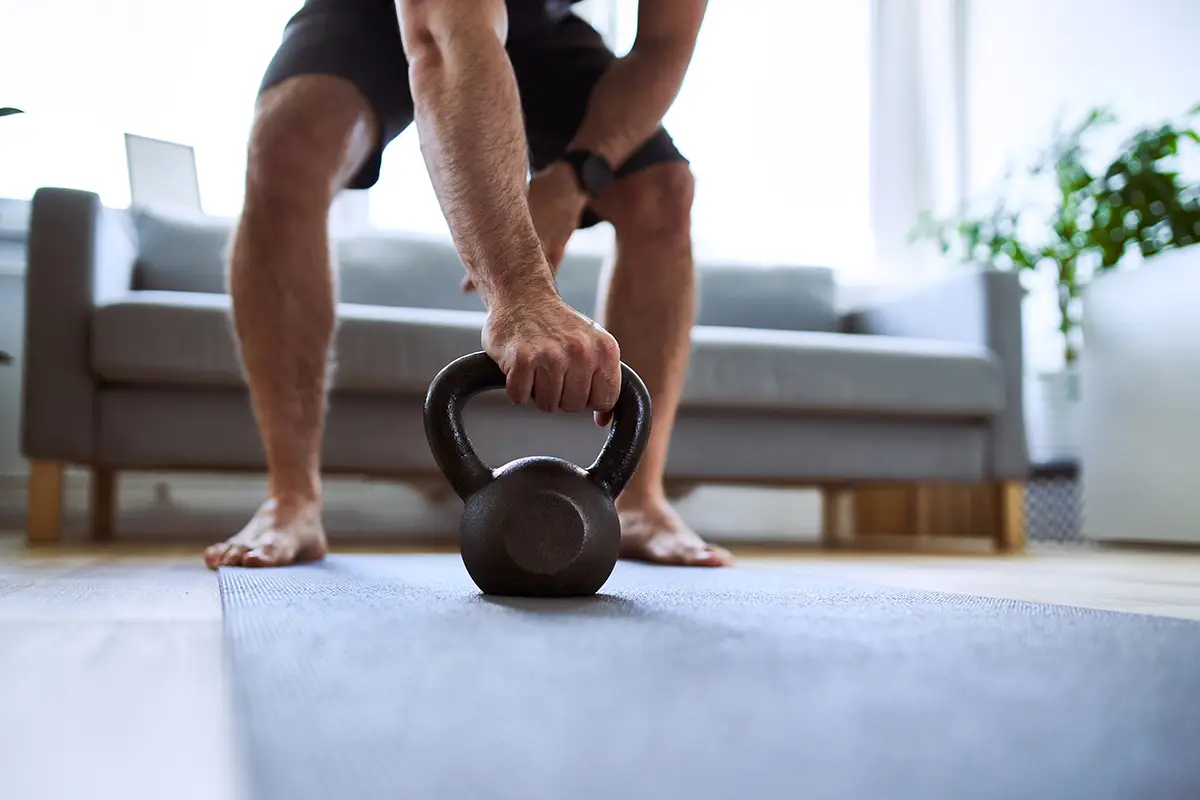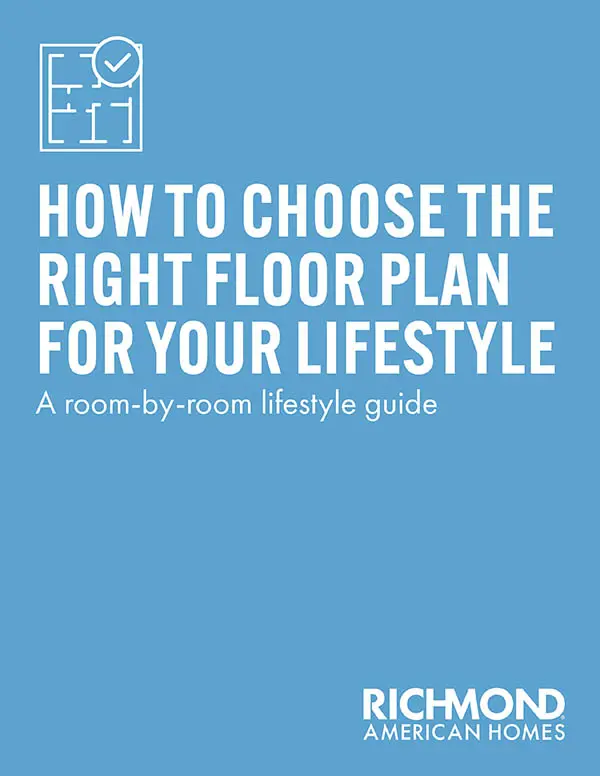Love the idea of working out in the comfort of your own house, but not sure about how to set up a home gym? We’re here to help you get started! Home gyms can be a great way to avoid costly membership fees, save time and gas, and conveniently develop or maintain a consistent fitness routine—however, we understand that setting one up might seem a bit intimidating at first.
Regardless of your home size, experience level or budget, there is a home gym option for everyone. Keep reading for tips and ideas to help you create your very own fitness haven!
Before you begin
You may first want to ask yourself a few questions to determine what kind of home gym you will need. These can include:
- What kind of exercises will I be doing?
- Will any other family members use the gym too?
- How often will I use it?
- How much space do I need?
- How much and what kind of lighting do I need?
- What is my budget? How much can I realistically spend on equipment, accessories, any necessary renovations, etc.?
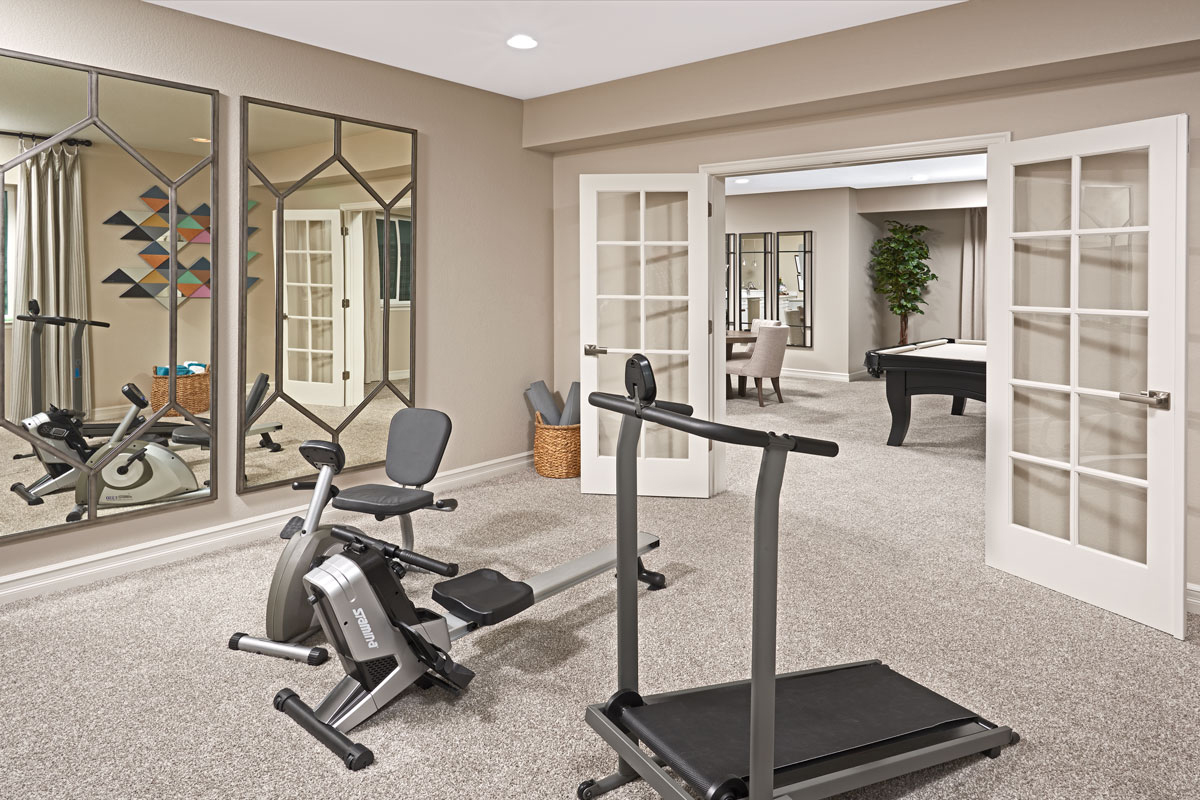
Find your perfect location
This initial step in how to set up a home gym is largely dependent on the answers to the questions above. You’ll need to decide whether you need an entire room for your gym, or whether a section of another room will be sufficient. For instance, a loft space could simultaneously serve as a homework station and a workout area, or a large garage could house both your car and your fitness equipment. If you need a full room, spaces such as a finished basement, a bonus room or even a spare bedroom may be more appropriate.
You’ll also want to consider factors such as windows (for natural lighting), power outlets (for plugging in electricity-powered fitness equipment, TVs and speakers), ceiling fans (for air circulation) and flooring. Resilient, non-slip flooring is ideal for a home gym setup, but the right material is often dependent on the type of exercises you’ll be doing. Carpet may be acceptable for yoga and other low-impact routines, but you’ll likely need something firmer for weight training and any heavy machines. If you’re converting a space in your home but don’t want to completely redo the flooring, rubber mats or interlocking foam tiles such as these can be great solutions.
Gather the equipment
Once you’ve determined what kind of exercises you’ll be doing and selected a space for your home gym, it’s time to gather the necessary equipment! Equipment can range in complexity and price, so it’s important to decide on a budget and only purchase what you know you’ll use. Additionally, you’ll want to be mindful of how much space you’re working with—if your home gym is in a multipurpose room, you might gravitate toward compact equipment or items that can easily be stored.
Common equipment categories are cardio, weight and resistance training and recovery, although there are plenty of miscellaneous items you may want or need.
Cardio
Cardio machines such as treadmills, stationary bikes, ellipticals and rowers are handy pieces to have, but they can also be an investment and take up considerable space. More compact and affordable options might include a classic jump rope or a multi-use plyo box (which also has DIY options!).
Weight and resistance training
Looking to start small? Resistance bands, TRX straps, kettlebells and dumbbells all offer value and versatility without requiring too much space or money—adjustable dumbbells are an excellent alternative if you don’t have the room to buy a whole set. More involved equipment might include a squat rack, a cable machine, barbells and plates.
Yoga and recovery
Sometimes, all you need to move your body is a mat and a little bit of space! Mats are useful not only for yoga poses and stretching, but also for ab exercises, Pilates and other bodyweight moves. Additionally, it’s important to remember a crucial step in every fitness plan: recovery. Tools such as foam rollers and massage balls are helpful to have on hand in your home gym.
Other useful equipment
Benches, medicine balls, punching bags, pullup bars and ab wheels are only a few examples of other items you might want in your home gym—the possibilities are endless!
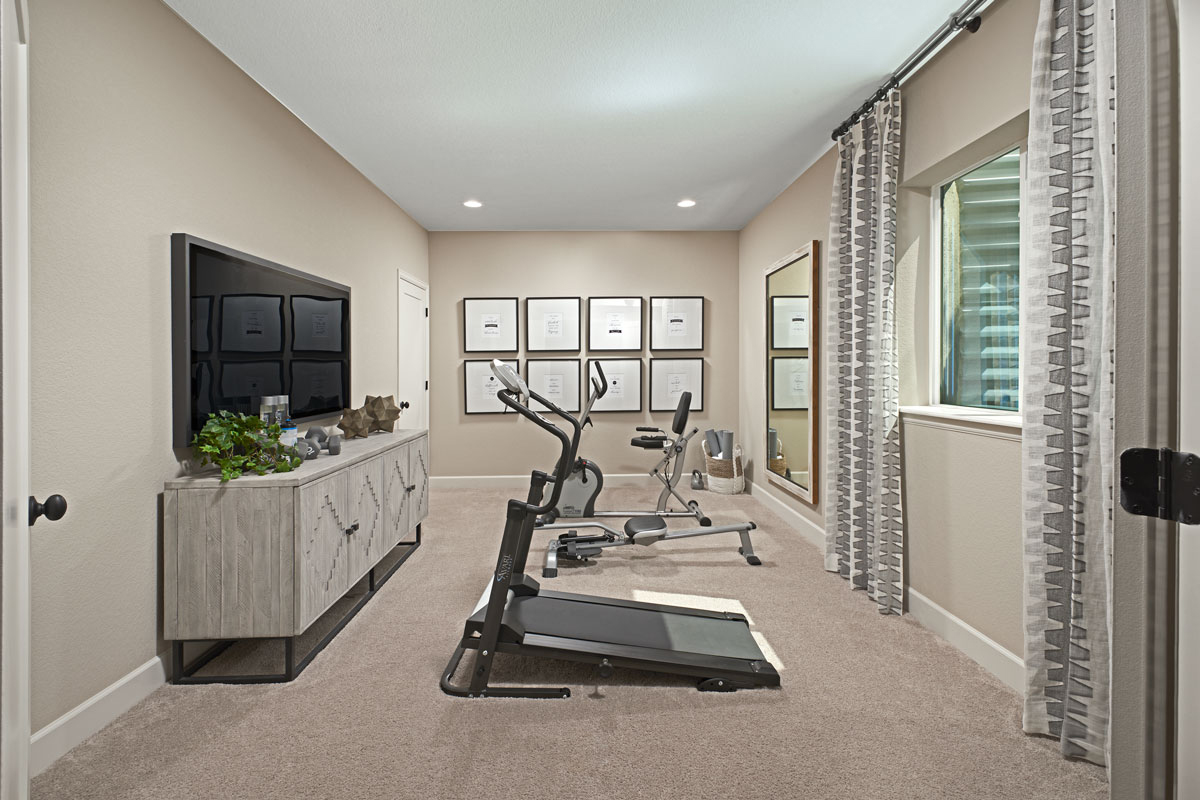
Set the scene
The next step in how to set up a home gym is to plot its layout. How will you arrange the machines and equipment? Electricity-powered machines will need to be placed near outlets, and you’ll likely want to leave ample room for stretching and floor exercises. Be sure to maintain a safe distance between equipment to reduce risk of injury, especially if multiple people might be using the gym at the same time.
Lighting is another important factor when creating a workout space. Natural light can help your gym feel bright and inviting, but areas such as basements and garages may not have windows and will require other light sources. Consider dimmable lights if you plan on doing a variety of exercises—softer, warm lighting is popular for yoga and stretching, while cool and bright lights can help energize your cardio or weight training routines.
Want to keep an eye on your form while working out? Wall-mounted mirrors are a home gym staple and have the added benefit of making your space feel larger. For further motivation, you can decorate the walls with inspirational artwork and decals, like this clever piece from Etsy.
Technology can also be a great resource for creating an enjoyable fitness routine! TVs are handy for playing workout videos on platforms like YouTube, and smart TVs may even offer access to different fitness apps. You can also add a sound system (or even a Bluetooth speaker) to fill your space with upbeat and energetic tunes, perfect for a mid-workout dance break!
One final element to consider is storage and how you’ll organize your gym. Wall mounts and floating shelves are great ways to keep miscellaneous equipment off the ground, and you can use baskets or vertical cubbies to store yoga mats, resistance bands, towels and other small items. Another solution is a sturdy multi-use rack like this one, which can hold heavy weights as well.
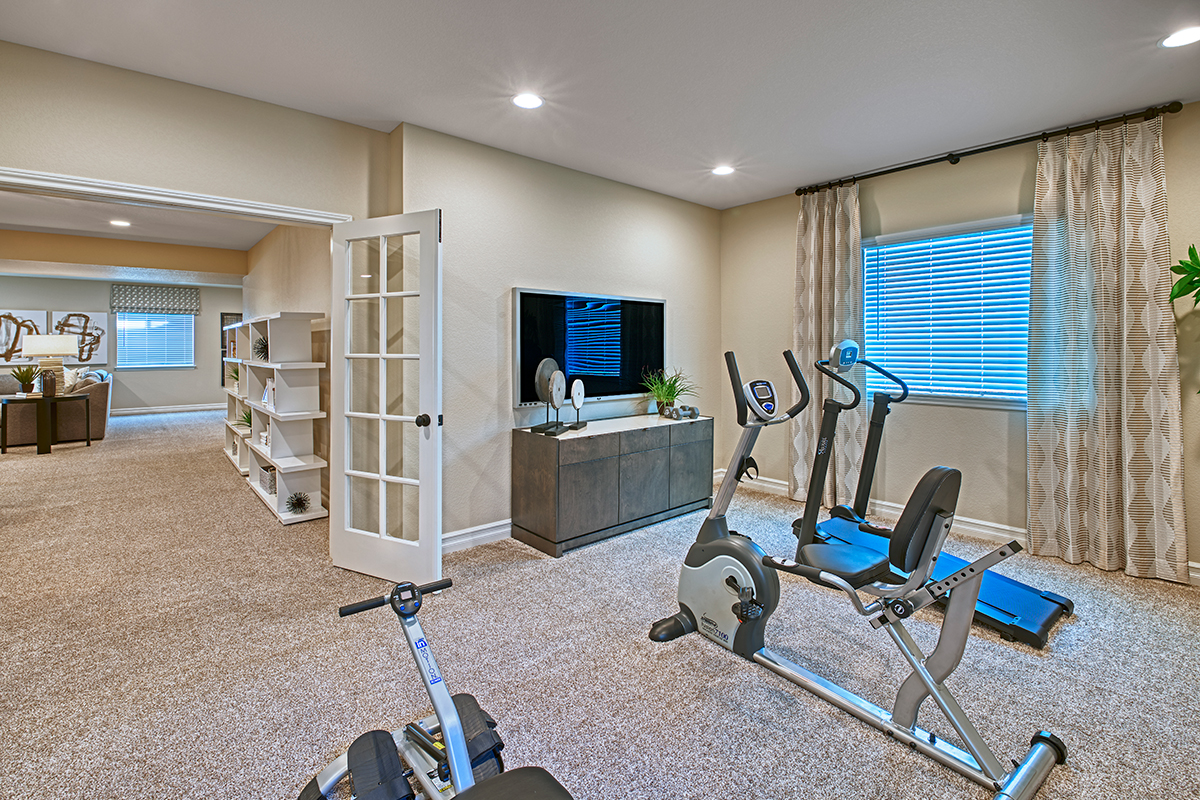
A few final tips
- You don’t need to buy every piece of equipment at once. Instead, consider starting with just a few basic and affordable items, such as a yoga mat and resistance bands, or a set of adjustable dumbbells. Over time, you can gradually add equipment and machines as you develop your routine.
- Outfitting your home gym doesn’t have to break the bank. There are many places to find inexpensive equipment, including secondhand shops and online marketplaces.
- Consider using a white board to write out your fitness routine and schedule. Not only does it keep you organized but hanging it up may also help put your workout top of mind and inspire consistency.
- Safety first! Tasks such as keeping your space clutter-free to prevent tripping, wiping up any slick sweat or spilled water, installing ample lighting and ensuring proper ventilation/temperature control can help keep you and any other home gym goers safe.
- Don’t have the space right now but know you want a home gym in the future? Make that a top item on the wish list for your next home and search for floor plans that feature bonus or flex rooms, lofts, finished basements and other versatile spaces.
For more fit-spiration and tips on how to set up a home gym, check out the following resources:
- Home Gym Ideas Pinterest board
- Everything Fitness Pinterest board
- Healthy Recipes Pinterest board
- Power Through 3 Common Home Gym Challenges
Get a room-by-room floor plan lifestyle guide!
Need help evaluating floor plans to discover which one is right for you? Get a floor plan worksheet, model home touring tips and more in How to Choose the Right Floor Plan for Your Lifestyle!
